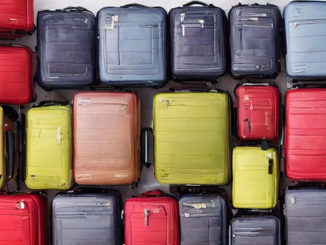
A Critical Overview of the Sagrada Familia: Barcelona’s Iconic Basilica
The Sagrada Familia is widely recognized as the symbol of Barcelona, attracting millions of visitors from around the world each year. The Expiatory Temple of the Holy Family was initially conceived as a simple Catholic church dedicated to Jesus, Mary, and Joseph. However, under the direction of the Catalan architect Antoni Gaudí, the basilica evolved into an embodiment of Catalan Modernism. Pope Benedict XVI recognized it as a basilica in 2010. Gaudí’s vision aimed to unify Christian teachings and biblical allegories with the complex symbolism found in nature. Organic, geometric shapes dominate every column, pinnacle, and stained glass window of the basilica, resulting in an extraordinary architectural masterpiece that continues to captivate visitors despite its unfinished state.
History of the Sagrada Familia
The Sagrada Familia is a living piece of history that began with the vision of local bookseller Josep Maria Bocabella. He sought to build an expiatory temple dedicated to the Holy Family and originally commissioned architect Francisco de Paula del Villar to design a neo-Gothic project. However, disagreements between Bocabella and del Villar led to Gaudí taking over the assignment. Gaudí’s innovative design pushed the boundaries of traditional architectural styles, and his primary goal was to create facades that would highlight the three phases of Jesus’s life: Nativity, Passion, and Glory. Organic symbolism was incorporated into the architecture, stained glass, and design elements to tell the story of Jesus and to highlight significant biblical histories. Gaudí knew the project was ambitious and that he would not see it completed in his lifetime, so he chose to focus on the external structure rather than the central nave. After Gaudí’s death, Domènec Sugrañes i Gras took over as the main architect. During Spain’s Civil War, anarchists set fire to the temple, destroying a significant part of Gaudí’s workshop. Reconstruction began in 1954 and has continued ever since.
Why is the Sagrada Familia not finished, and when will it be completed?
Despite today’s advanced technology, skilled architects and engineers face significant challenges in deciphering and constructing the complex geometric shapes that compose what is intended to be the world’s tallest church (172.5m). Additionally, the Sagrada Familia has always relied on private donations, which have not always been forthcoming, especially during Spain’s Civil War and the following decades. Construction has accelerated since the 1992 Olympic Games in Barcelona, which increased the city’s international reputation and the number of visitors. The basilica was scheduled to be completed by 2026 for the centenary of Gaudí’s death, but COVID-19 has postponed its completion. Work has resumed, but a new completion date has yet to be announced.
Visiting the Sagrada Familia
The site of the Sagrada Familia is divided into four main sections: the basilica, the school building, the museum, and the towers. Due to COVID-19 restrictions, only the basilica is currently open to visitors. Individual tickets to the basilica cost €26 and include an audio-guide app available in 16 languages. Guided tours are also available in six languages, with an individual ticket costing €27. The Gaudí Museum houses a recreation of the architect’s workshop and a collection of his materials and mockups. Gaudí designed and built the school building in 1909 for the workers’ children, with a design similar to that of the Casa Milà.
Conclusion
The Sagrada Familia is an extraordinary feat of architecture and construction, encompassing Gaudí’s vision of organic symbolism.



